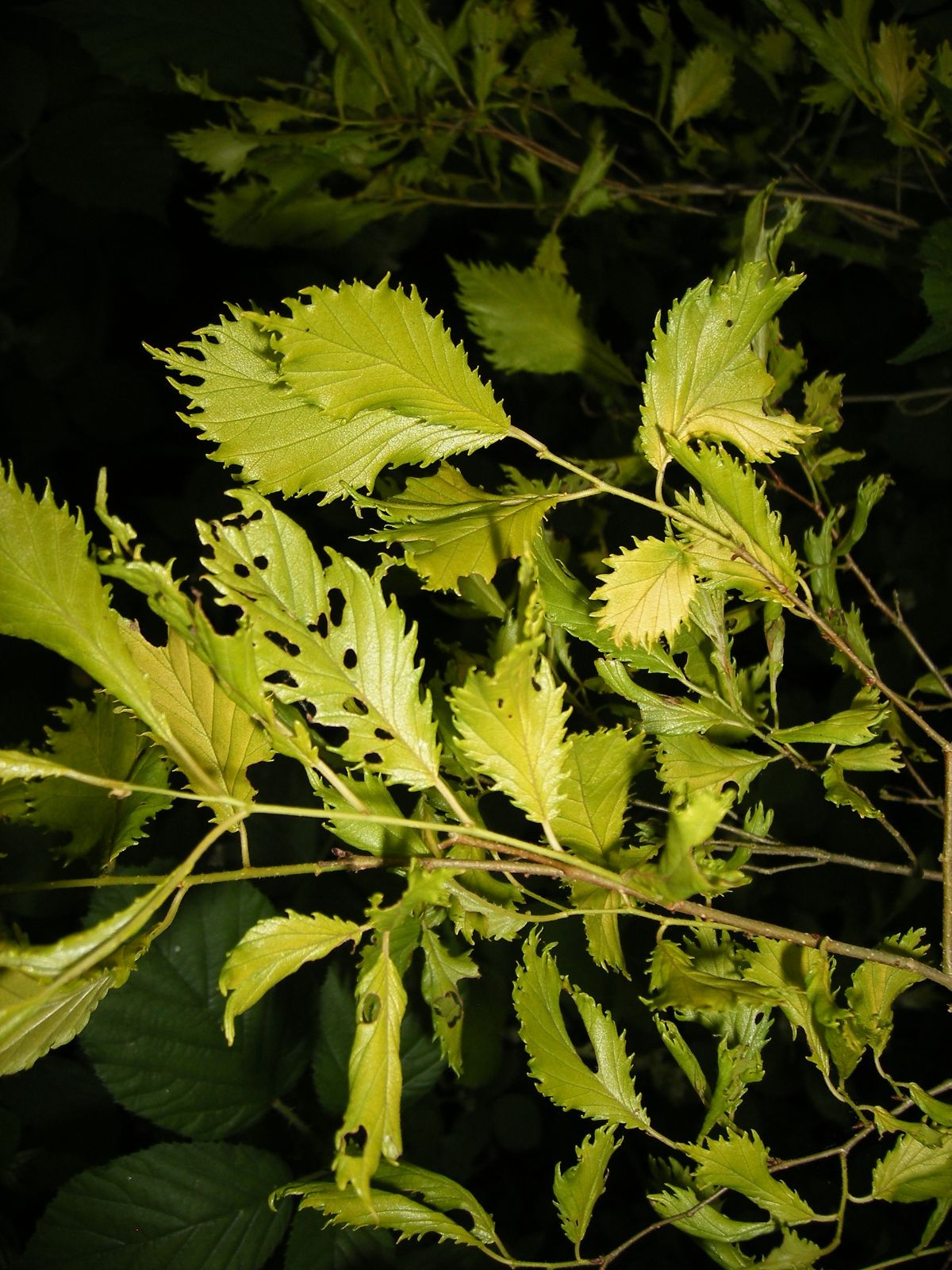Ulmus 'Viminalis'
Credits
Article from Bean's Trees and Shrubs Hardy in the British Isles
Recommended citation
'Ulmus 'Viminalis'' from the website Trees and Shrubs Online (treesandshrubsonline.
Genus
Synonyms
- U. viminalis Lodd. ex Bean
- U. campestris var. viminalis (Lodd.) Loud.
- U. procera var. viminalis (Loud.) Rehd.
- U. antarctica Kirchn.
Other taxa in genus
- Ulmus americana
- Ulmus angustifolia
- Ulmus bergmanniana
- Ulmus campestris
- Ulmus canescens
- Ulmus carpinifolia
- Ulmus castaneifolia
- Ulmus chenmoui
- Ulmus coritana
- Ulmus crassifolia
- Ulmus davidiana
- Ulmus elliptica
- Ulmus gaussenii
- Ulmus glabra
- Ulmus glaucescens
- Ulmus × hollandica
- Ulmus japonica
- Ulmus laciniata
- Ulmus laevis
- Ulmus lamellosa
- Ulmus macrocarpa
- Ulmus parvifolia
- Ulmus plotii
- Ulmus procera
- Ulmus pumila
- Ulmus rubra
- Ulmus serotina
- Ulmus szechuanica
- Ulmus thomasii
- Ulmus villosa
- Ulmus wallichiana
- Ulmus wilsoniana
A narrow-headed, rather slender tree with drooping branches; young shoots slightly downy, slender. Leaves oblanceolate or narrowly oval, nearly always tapered at the base, terminated by a long slender point, 1 to 2 in. long, 1⁄3 to 3⁄4 in. wide, very deeply toothed, the teeth narrow, often blunt, upper surface very rough, lower one downy especially in the vein-axils and on the veins.
The cultivated elm described above is considered by Dr Melville to be an extreme form, and also the type, of a natural hybrid, U. × viminalis, occurring from Essex to Oxfordshire, the parents of which are U. carpinifolia and U. plotii (Stace, op. cit., p. 298).
U. ‘Viminalis Aurea’. – Resembling the above, but leaves yellow (U. campestris var. aurea Morren; U. campestris Rosseelsii Hort.; U. campestris var. viminalis aurea Henry). Raised by Rosseel, Louvain, before 1866.
U. ‘Viminalis Marginata’. – leaf margins variegated with creamy white (u. campestris viminalis marginata kirchn.; u. c. var. viminalis variegata nichols.).
U. ‘Betulifolia’. – This appears to be allied to ‘Viminalis’, and is of uncertain origin, possibly a hybrid in whose origin U. carpinifolia has shared. The leaves are narrowly obovate, up to 21⁄2 in. long by 11⁄2 in. wide, the margins deeply toothed, the teeth narrow, incurved, often again toothed, very harsh to the touch above, downy in the vein-axils beneath. The habit is elegant on account of the pendulous young branchlets.

